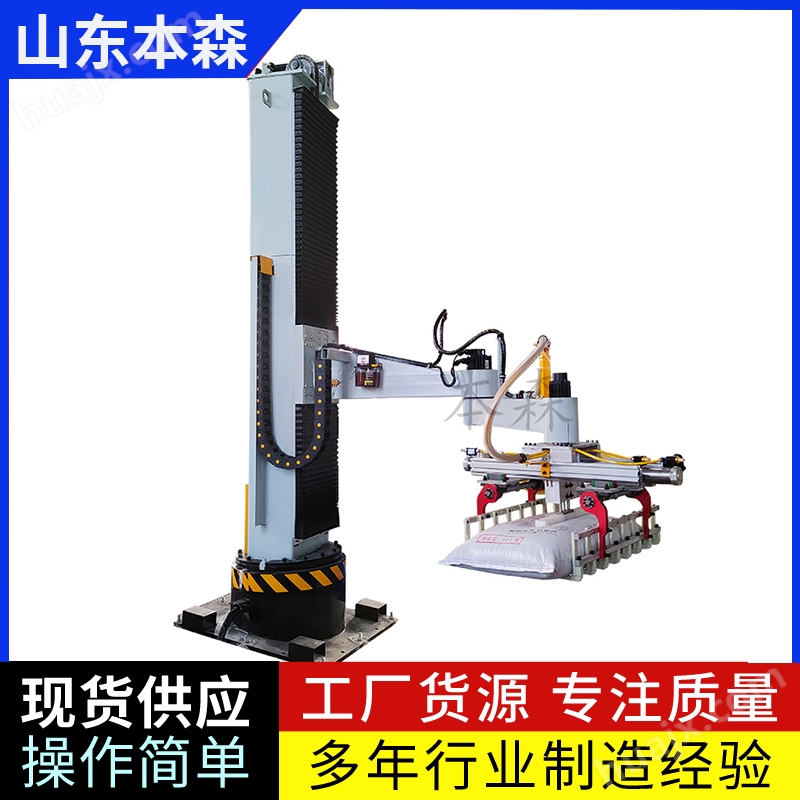肥料立柱式堆垛机Fertilizer column stacker
产品简介
详细信息

肥料立柱式堆垛机是一种专门设计用于农业仓库或肥料加工企业中,实现肥料高效自动化堆放的机械设备。这种堆垛机通常采用立柱式结构,可以垂直升降和水平伸缩,从而将肥料精准地码放到位置,形成规整的堆垛,极大地提高了肥料存储的空间利用率和作业效率。
立柱式堆垛机一般包含以下几个主要部分:
1. 升降系统:通过电动葫芦、液压升降装置等驱动设备,实现堆垛机在竖直方向上的移动,以便将肥料提升至所需堆放高度。
2. 货叉或抓取装置:用于夹持、搬运肥料包,确保肥料在搬运过程中的稳定性和安全性。
3. 行走机构:允许堆垛机在堆场内水平移动,到达不同的堆放点位。
4. 控制系统:集成的自动化控制系统,可实现堆垛机的精准定位、自动避障等功能,并可通过远程操作或预设程序完成堆垛作业。
5. 安全防护装置:包括限位开关、光电传感器等,确保堆垛机在运行过程中符合安全规范,防止意外发生。
总之,肥料立柱式堆垛机是现代化农业生产和仓储管理的重要组成部分,它的应用大大减轻了人工劳动强度,提高了肥料储存管理水平。
Fertilizer column stacker is a kind of mechanical equipment specially designed for agricultural warehouses or fertilizer processing enterprises to achieve efficient and automatic stacking of fertilizer. This kind of stacker crane usually adopts a column structure, which can be vertically lifted and horizontally expanded, so that the fertilizer can be accurately stacked in the designated position to form a regular stack, which greatly improves the space utilization rate and operation efficiency of fertilizer storage.
The column stacker crane generally contains the following main parts:
1. Lifting system: Through the electric hoist, hydraulic lifting device and other driving equipment, the stacker crane can be moved in the vertical direction in order to lift the fertilizer to the required stacking height.
2. Fork or grabbing device: used to clamp and handle fertilizer bags to ensure the stability and safety of fertilizer during handling.
3. Walking mechanism: allow the stacker crane to move horizontally in the yard to reach different stacking points.
4. Control system: Integrate advanced automatic control system, which can realize the precise positioning of the stacker, automatic obstacle avoidance and other functions, and complete the stacking operation through remote operation or preset programs.
5. Safety protection devices: including limit switches, photoelectric sensors, etc., to ensure that the stacker crane meets the safety specifications during operation and prevent accidents.
In short, the fertilizer column stacker is an important part of modern agricultural production and storage management, and its application greatly reduces the labor intensity and improves the level of fertilizer storage management.

